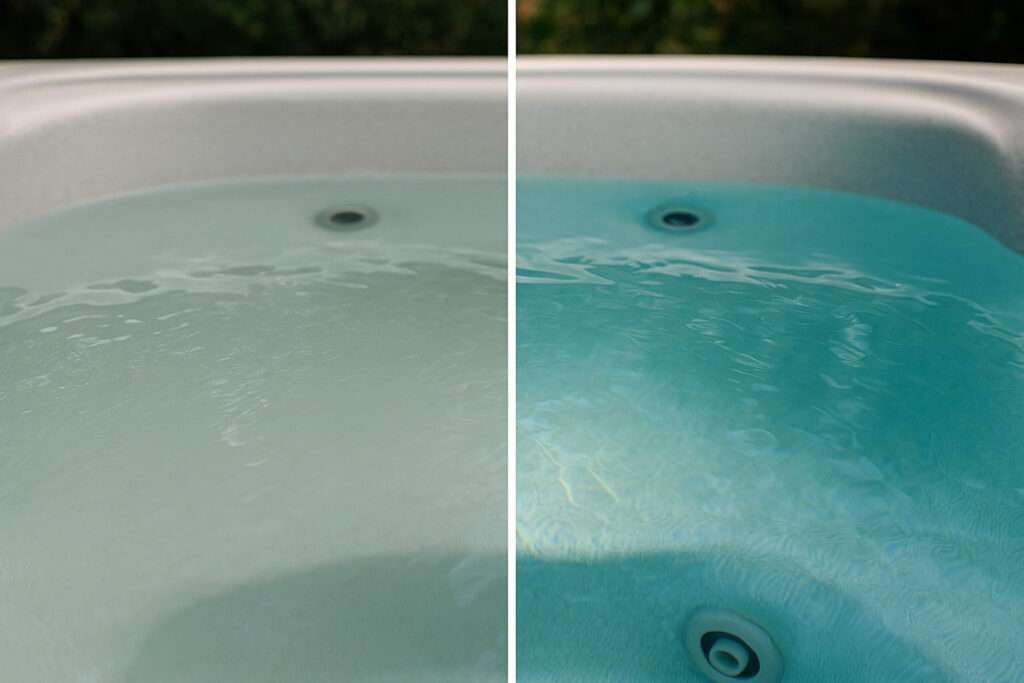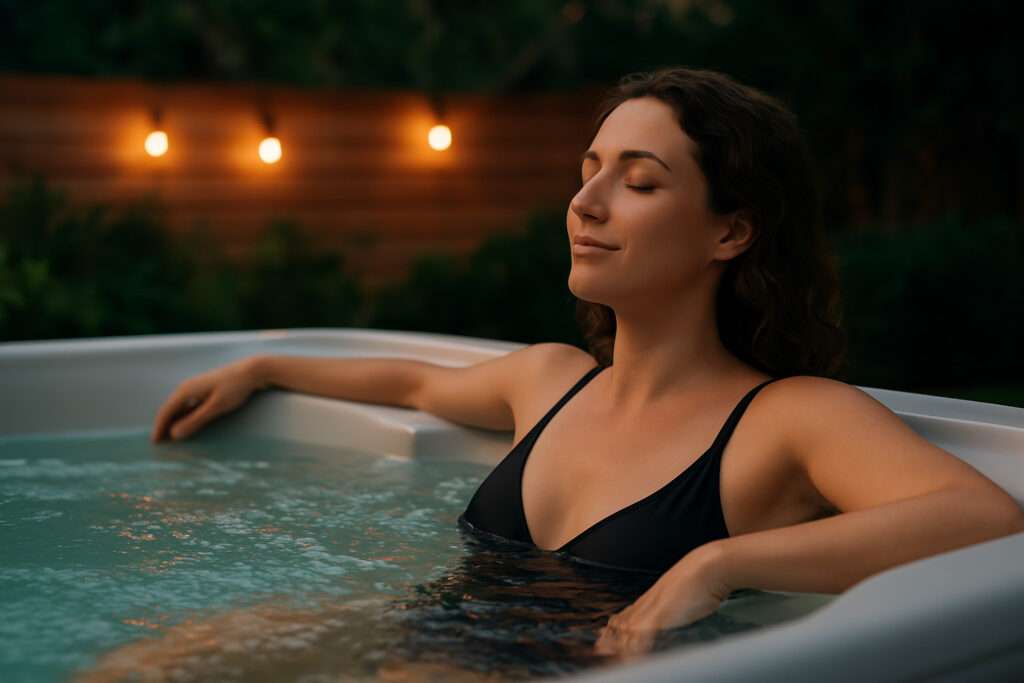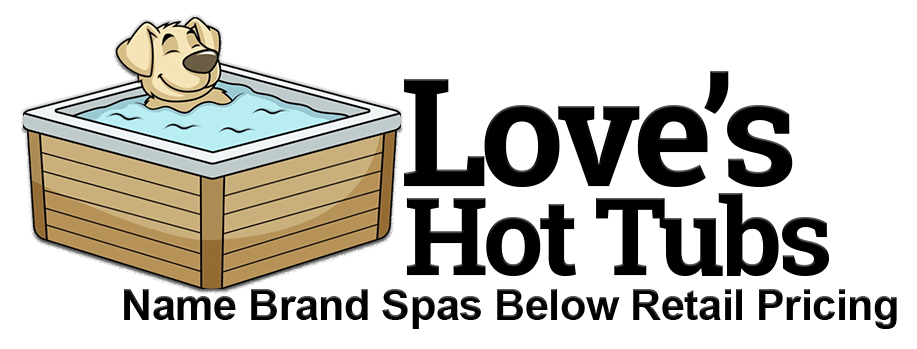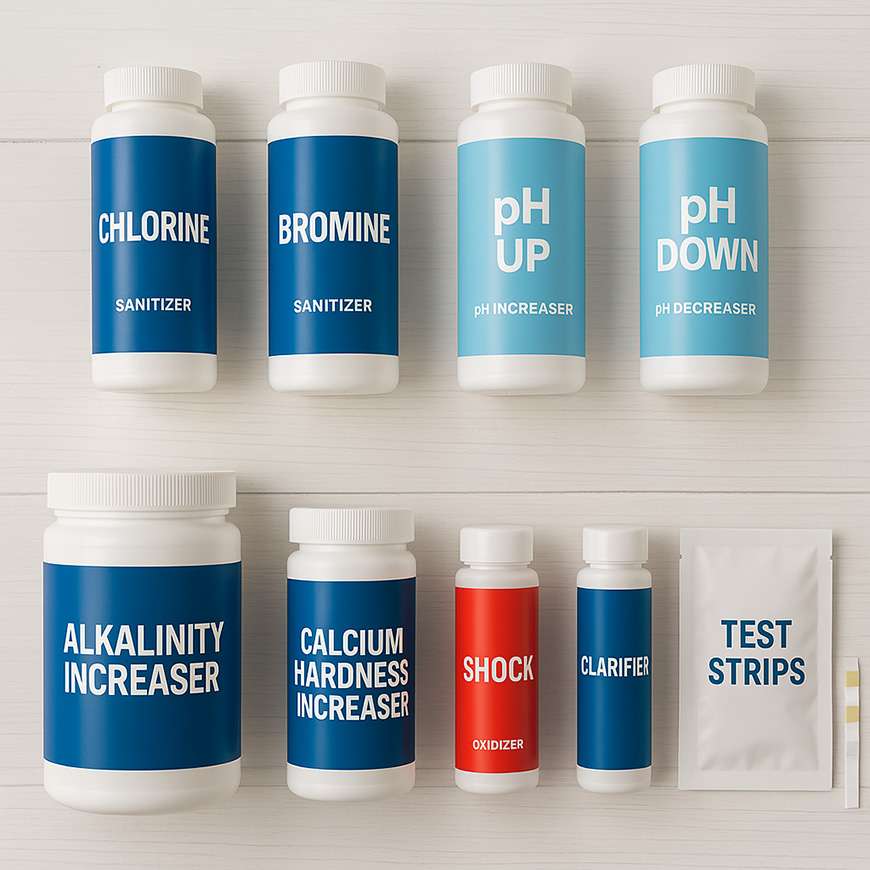There’s nothing quite like relaxing in your hot tub at the end of a long day. Whether it’s to relieve tension, soothe sore muscles, or enjoy time with loved ones, your spa is a source of comfort and wellness. But that warm, inviting water doesn’t stay clean and balanced on its own. Behind every sparkling hot tub is a reliable chemical maintenance routine—and every spa owner should know the essentials.
In this guide, we’ll explain the must-have hot tub chemicals you need to keep your water safe, balanced, and clear. We’ll also explain what each chemical does, when and how to use it, and why proper maintenance isn’t just about appearance—it’s about extending the life of your hot tub and creating a safe environment for everyone who uses it.
Why Water Chemistry Matters
A hot tub is a closed system that recirculates water through a filter and heater. Without proper water treatment, bacteria, algae, and organic waste can build up quickly. Unbalanced water can damage your hot tub’s plumbing, heater, and shell and may cause skin irritation or infections.
According to the Centers for Disease Control and Prevention (CDC), recreational water illnesses are often linked to poorly maintained hot tubs and spas [1]. Maintaining chemical balance isn’t just about protecting your investment—it’s about protecting your health.

1. Sanitizers: Chlorine or Bromine
Sanitizers are the foundation of hot tub water care. Their main job is to kill harmful bacteria, viruses, and other pathogens.
- Chlorine (typically sodium dichlor for spas) works quickly and is highly effective. It’s a popular choice because it’s affordable and easy to monitor. However, it may cause a stronger smell and more noticeable skin irritation for sensitive users.
- Bromine is more stable at high temperatures, making it an excellent choice for hot tubs. It’s also gentler on the skin and lasts longer in the water. However, it works a bit slower and is slightly more expensive.
Ideal levels:
- Chlorine: 3–5 parts per million (ppm)
- Bromine: 3–6 ppm
When to use: Maintain these levels consistently. Test 2–3 times per week or after heavy usage.
Reference: Pool & Hot Tub Alliance (PHTA) recommends maintaining proper sanitizer levels at all times to prevent microbial growth [2].
2. pH Adjusters: pH Up and pH Down
pH measures how acidic or basic your water is. This directly impacts the effectiveness of your sanitizer and the overall comfort and safety of your water.
- pH Increaser (Sodium Carbonate) raises pH if it drops below 7.2.
- pH Decreaser (Sodium Bisulfate or Muriatic Acid) lowers pH if it rises above 7.8.
Ideal range: 7.2 to 7.8
Low pH can corrode spa components and irritate the skin. High pH can reduce sanitizer effectiveness and cause cloudy water or scaling.
When to use: Test your water at least twice weekly and adjust as necessary.
3. Total Alkalinity Increaser
Alkalinity acts as a buffer for pH. If your total alkalinity is off, your pH levels will fluctuate dramatically, even with minor changes in chemical treatment.
- Total Alkalinity Increaser (Sodium Bicarbonate) stabilizes water and helps maintain pH levels.
Ideal range: 80–120 ppm
When alkalinity is too low, water becomes corrosive. Water can become cloudy when it’s too high, and pH will be difficult to adjust.
When to use: Test weekly or after draining/refilling your spa.
Reference: According to the National Sanitation Foundation (NSF), balanced alkalinity is key to maintaining water chemistry and protecting spa equipment [3].
4. Calcium Hardness Increaser
Water that’s too soft (low calcium hardness) can lead to corrosion of metal components. Too hard water can cause scale buildup, reducing heater efficiency and clogging jets.
- Calcium Hardness Increaser prevents long-term damage and keeps water clear and safe.
Ideal range: 150–250 ppm
When to use: Check calcium levels monthly or anytime you fill your spa with new water.
5. Shock (Oxidizer)
Even with consistent sanitizing, organic matter like sweat, body oils, and lotions build up in the water. Shocking oxidizes this waste and revitalizes your sanitizer.
- Chlorine Shock: Ideal after heavy usage or very dirty water. Adds extra sanitizer to the water.
- Non-Chlorine Shock (Potassium Monopersulfate): This doesn’t raise chlorine levels and is great for routine use.
When to use: Weekly or after parties and frequent use.
Reference: The CDC and Pool & Hot Tub Alliance recommend shock treatments as part of routine maintenance to remove chloramines and improve sanitizer effectiveness [1][2].
6. Clarifier
Sometimes, water may appear hazy even if chemical levels are within range. That’s where clarifiers come in. They bind together tiny particles, making them easier for your filter to catch.
- Water Clarifier polishes the water and helps restore clarity after shock or heavy use.
When to use: As needed. Especially helpful after shocking or cleaning the filter.
7. Test Strips or Liquid Test Kits
Routine water testing is the cornerstone of effective spa maintenance. Without testing, you won’t know what adjustments are necessary to keep your water balanced.
- Test Strips are quick and easy to use—simply dip and compare to the chart.
- Liquid Test Kits are more precise and preferred by long-time spa owners or commercial spa operators.
When to use: At least 2–3 times per week. Test after adding chemicals, following heavy usage, or if water appears cloudy.
How These Chemicals Work Together
Think of spa water like a puzzle—each piece matters. Your sanitizer relies on proper pH and alkalinity levels to work efficiently, and your filter relies on clarifiers to capture fine particles. Without regular shock and testing, even perfectly balanced water can deteriorate quickly.
Together, these components create a system that protects your spa, your skin, and your peace of mind.
Protecting Your Investment
Failing to maintain your water chemistry can lead to costly damage. Chemical imbalances can cause corrosion, scaling, heater burnout, and clogged jets. Replacing spa parts and water can also be expensive and time-consuming.
A consistent water care routine will:
- Extend the life of your heater and plumbing
- Prevent skin and eye irritation
- Maintain crystal-clear, odor-free water
- Reduce your overall maintenance costs
Get Your Spa Supplies at Love's Hot Tubs
At Love’s Hot Tubs, we carry everything you need to confidently care for your hot tub. Our curated selection ensures quality, effectiveness, and convenience, from sanitizers to shock and pH adjusters to testing kits.
Whether setting up a new spa or restocking your supplies, our team is here to help you choose the right products for your needs. We also offer bundled chemical kits, spa starter packages, and seasonal promotions so you can get everything you need in one trip.
Love’s Hot Tubs is your one-stop shop for reliable spa care in-store and online.

Final Thoughts
Owning a hot tub should be a source of relaxation, not stress. With the right knowledge and the right products, you can maintain sparkling, balanced water all year long. When used correctly, these essential chemicals work together to protect your investment and enhance your entire spa experience.
Visit Love’s Hot Tubs today for trusted spa care products and expert support. We’re open Saturdays from 10 AM to 5 PM, and available Monday through Friday by appointment only. Whether you’re restocking your essentials or need one-on-one guidance, we’re here to help make hot tub ownership easy, enjoyable, and crystal clear.
References
- Centers for Disease Control and Prevention (CDC): The CDC provides comprehensive hot tub and spa safety guidelines, including water quality recommendations and maintenance practices. You can access their resources here: CDC – Healthy Swimming
- Pool & Hot Tub Alliance (PHTA): PHTA offers educational materials and water quality and maintenance courses. While the specific page may not be available, their main website provides valuable resources: PHTA Education
- NSF International: NSF certifies pool and spa equipment and provides standards for water treatment. For information on certified products and standards, visit: NSF Recreational Water Facilities

